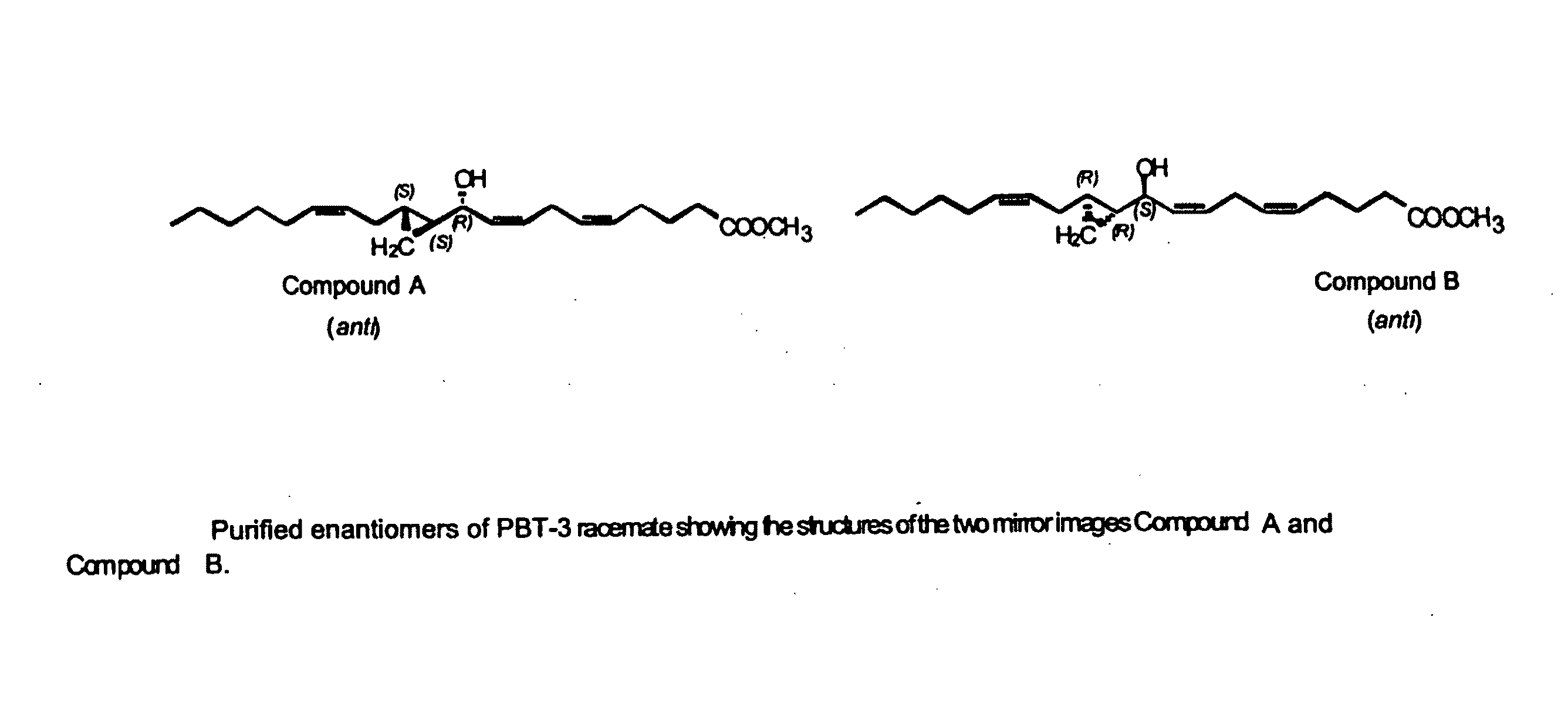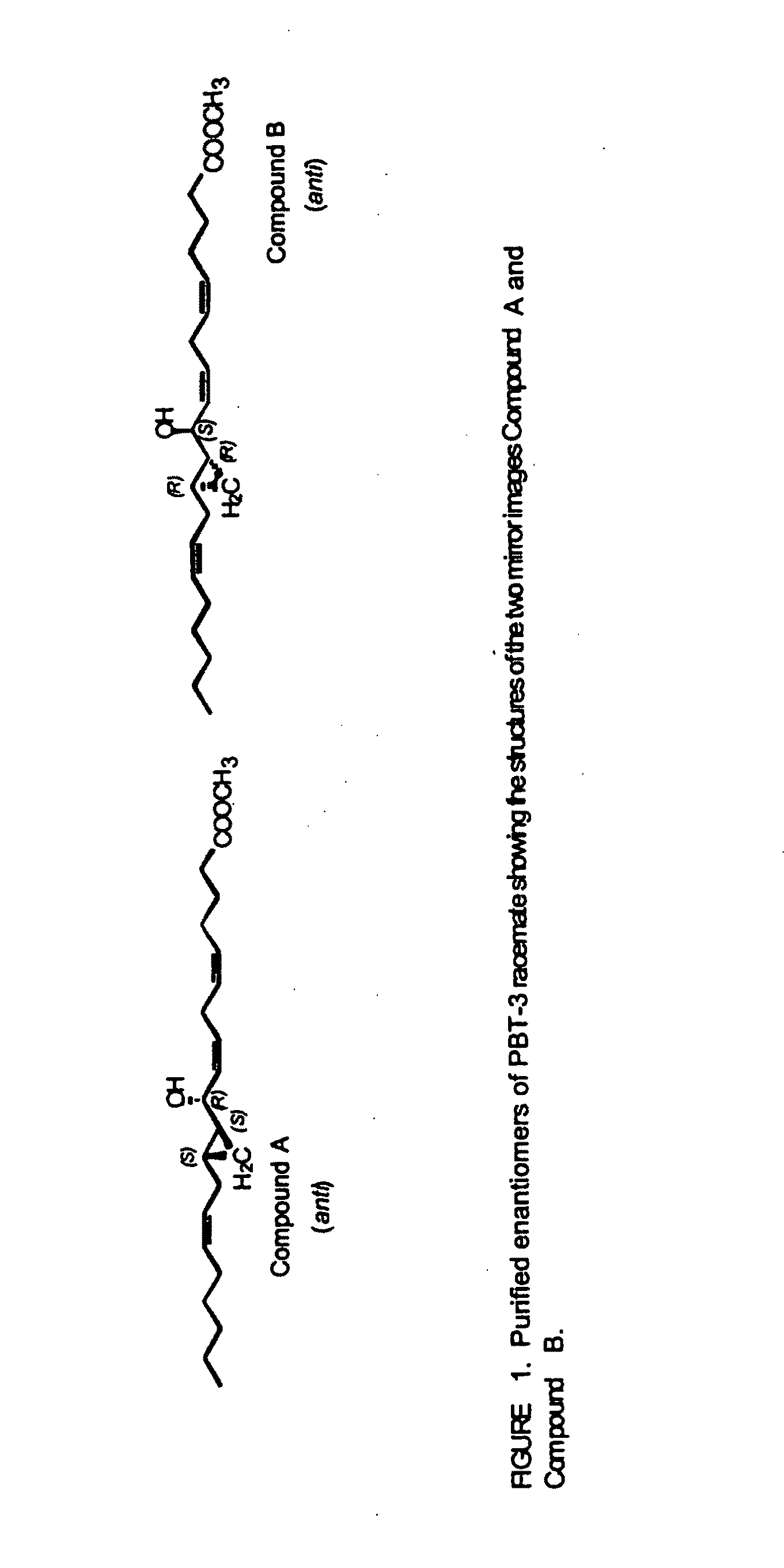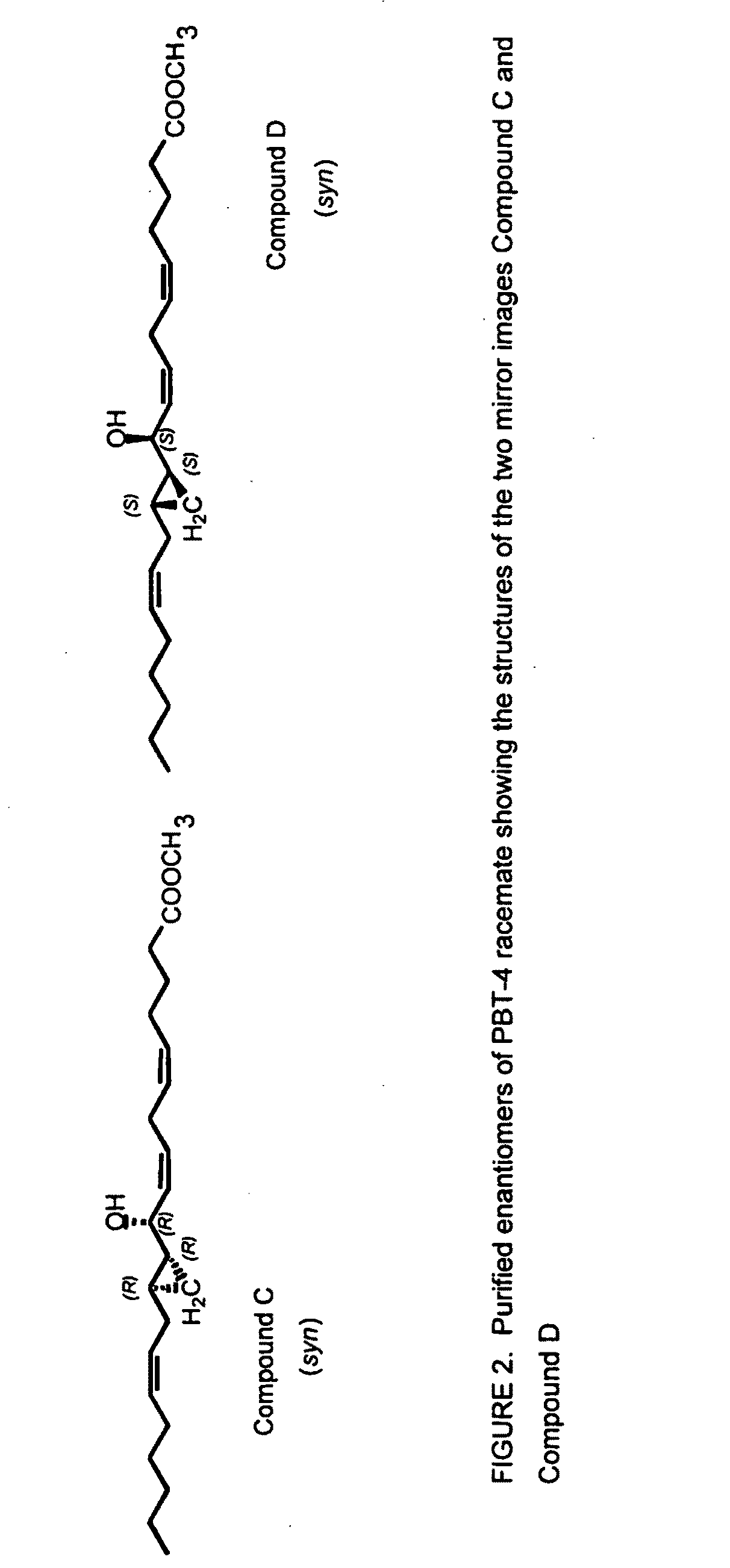Hepoxilin analog enantiomers
a technology of hepoxilin and analogs, applied in the field of hepoxilin analogs, can solve the problems that the racemic mixture of the hepoxilin analog described herein cannot be resolved by these methods, and achieve the effects of enhancing chemilluminescence, assessing cell viability, and equivalent protein load/transfer
- Summary
- Abstract
- Description
- Claims
- Application Information
AI Technical Summary
Benefits of technology
Problems solved by technology
Method used
Image
Examples
example 1
Separation of 10R-hydroxy-11S,12S-cyclopropyl-eicosa-5Z,8Z,14Z-trienoic acid methyl ester (anti) (Compound A) from racemic PBT-3
[0170]Racemic anti form of 10-hydroxy-11,12-cyclopropyl-eicosa-5Z,8Z,14Z-trienoic acid methyl ester (PBT-3) was prepared and isolated as described in U.S. Pat. No. 5,616,607. This example describes the isolation of the respective enantiomers from the racemic mixture.
[0171]Attempts to separate the enantiomers of PBT-3 by conventional methods involving HPLC (on normal and reverse supports) were unsuccessful.
[0172]The enantiomeric separation of racemic PBT-3 was successfully carried out on a chiral phase HPLC column (Chiralcel OD column—DAICEL Chemical Ind.—CSC, Montreal, 10 micron particle size), using hexanes-isopropanol about 99:1 v / v, and a flow rate of 1 ml / min. The column allowed the separation of 50-100 micrograms at a time, affording pure enantiomers.
[0173]The racemate PBT-3 gave two products, compound A and compound B, in a 1:1 ratio. Compound A (10...
example 2
Separation of 10S-hydroxy-11R,12R-cyclopropyl-eicosa-5Z,8Z,14Z-trienoic acid methyl ester (anti) (Compound B) from racemic PBT-3
[0180]This example describes the isolation of 10S-hydroxy-11R,12R-cyclopropyl-eicosa-5Z,8Z,14Z-trienoate methyl ester from racemic PBT-3. Compound B was well resolved from compound A on the Chiralcel-OD HPLC column by the method described in Example 1. The elution time of compound B was 20.4 min with hexanes-isopropanol and 15.9 min with hexanes-n-butanol. Its absolute configuration was derived from the knowledge that it belonged to the “anti” series and was the mirror image of Compound A, therefore having the structure 10S-hydroxy-11R,12R-cyclopropyl-eicosa-5Z,8Z,14Z-trienoic methyl ester. The optical rotation of Compound B was [α]D+16.1 (CHCl3, 27.1° C., 589 nm). The free acid can be obtained by conventional methods, for example by alkaline hydrolysis of the methyl ester.
example 3
Separation of 10R-hydroxy-11R,12R-cyclopropyl-eicosa-5Z,8Z,14Ztrienoic acid methyl ester (syn) (Compound C) from racemic PBT-4
[0181]The cyclopropyl group of compound C is syn relative to the C10 hydroxyl group.
[0182]Racemic PBT-4 was separated into its two enantiomers, compounds C and D (FIG. 2), by chiral phase HPLC, essentially as described in Example 1. Using hexanes / isopropanol about 99:1, Compound C eluted at 14.4 min, and its mirror image, compound D, at 15.5 min. Using hexanes / n-butanol about 99.2:0.8, Compound C eluted at 15.1 min, and its mirror image, compound D, at 17.4 min.
[0183]The absolute configuration of Compound C was established by NMR of diagnostic resonances after esterification of the compound with commercial Mosher reagent (acid chloride, R(−) and S(+)), as described in Example 1. The characterisation process is shown in FIG. 6. Compound C was unstable to the alkaline conditions of the reaction (pyridine solvent with DMAP catalyst) and therefore a rapid (1 min...
PUM
| Property | Measurement | Unit |
|---|---|---|
| particle size | aaaaa | aaaaa |
| particle size | aaaaa | aaaaa |
| flow rate | aaaaa | aaaaa |
Abstract
Description
Claims
Application Information
 Login to View More
Login to View More - R&D
- Intellectual Property
- Life Sciences
- Materials
- Tech Scout
- Unparalleled Data Quality
- Higher Quality Content
- 60% Fewer Hallucinations
Browse by: Latest US Patents, China's latest patents, Technical Efficacy Thesaurus, Application Domain, Technology Topic, Popular Technical Reports.
© 2025 PatSnap. All rights reserved.Legal|Privacy policy|Modern Slavery Act Transparency Statement|Sitemap|About US| Contact US: help@patsnap.com



